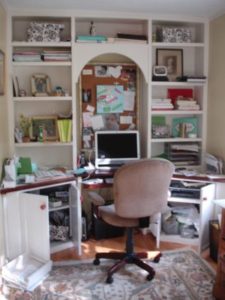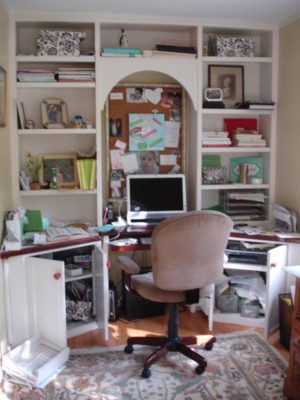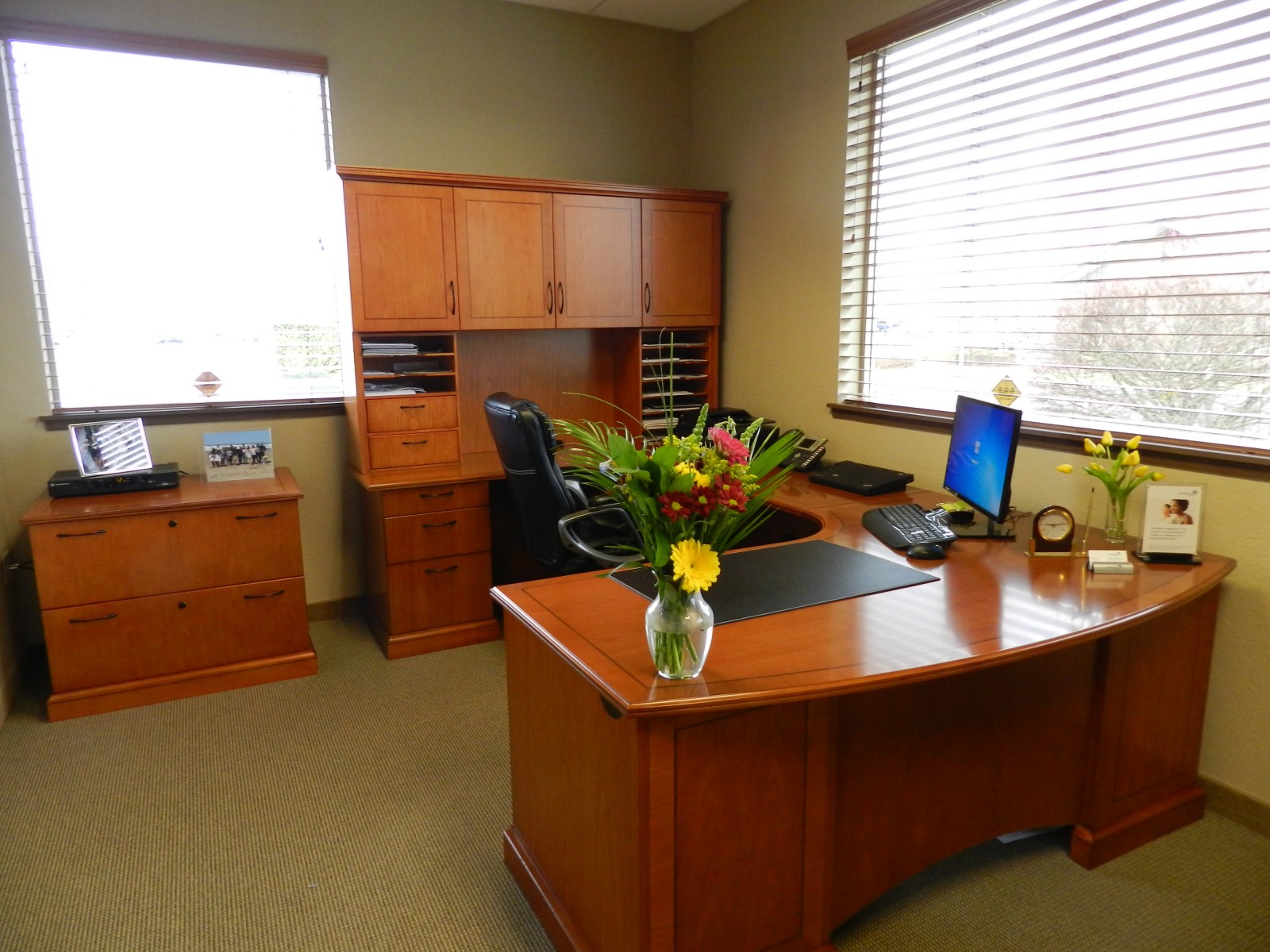 Do you clear off your desk only to find paper clutter piling up within a few days?
Do you clear off your desk only to find paper clutter piling up within a few days?
How much does handling invasive paper clutter cost you every week, every month, every year? How much time does your office staff spend looking at, filing, piling, looking at it again, re-piling, and finally filing it or throwing it away?
You’ve heard the rule ‘touch it once,’ but are not sure how to do that AND get the paper to its destination in just one step. This article teaches some tried and true tricks professional organizers like me teach clients.
-
Refuse paper—Don’t bring it in
The first step to managing your clutter is preventing paper from coming into your home or office. Yes, refuse to let it come in. Don’t take papers, flyers, subscriptions, etc., unless you have something further to do with it. Ask yourself: is there an action linked to this paper? If the answer is no, then let it go, let it go!
2. Take time to Purge

This is the most important way to prevent paper clutter. Be ruthless! Decide on a time each day or at least once per week to purge unnecessary paper from your desk. What can you purge? Anything you’ve delegated to another person, completed, spilled coffee on, decided on, or is outdated information, like old agendas, et cetera. **
-
Rip open Mail daily
This habit will help you stay on top of the mail, which is one of the main paper clutter-makers. And while you open the mail, make sure you do it over the trash can or recycling container. Then you just let the junk mail slip down into the disposal.
I recently worked for a client, a well-respected business owner, who had 2 years of mail piled up in boxes. When we finally ripped through that mail and disposed of it, he heaved a sigh of relief.
-
Do those 2-minute Tasks now
I credit this tip to David Allen’s brilliance. It makes so much sense everyone should be doing it. Instead of putting that paper on a pile or putting that action on your to-do list, do it now! Sort through the papers on your desk (or your emails) and do everything that requires 2 minutes or less. I promise you will feel like you accomplished something, and the paper won’t weigh you down any more.


5. Transfer the Action (to calendar or to-do list)
To be more effective, take whatever action the paper demands and transfer it to your to-do list or calendar. You kept your meeting agenda because you want the information the team leader shared about the new production team, but are you ever going to look at it again? Or did you use writing as an exercise to help you remember the information? (As many do.)
Here’s what I do: any information I want for later, I type into my tablet or phone in a nifty Note app while I am in the meeting. Then I email it to myself. The information is not lost, and doesn’t end up cluttering your desk. Later, usually during planning, I transfer any action items to my to-do list or calendar any events. Sweet solution!
-
Paper is not a reminder
Say you kept the agenda from last week’s staff meeting to remind you to call the head of HR for a link to a training she talked about. Why not just email or call her right now, or write it down so you won’t forget, then toss the paper?
-
Refuse to pile up magazines, newspapers
Just like you did with mail, flyers, and other paper, refuse to keep stacks of magazines to “read later.” This is a trap. If you have trouble with this, discipline yourself to recycle last month’s magazine when this month’s arrives. If you have more than 2 magazines unread, stop your subscription or put it on hold. Especially if you get a sinking feeling when you add a new magazine to the pile of older issues. If getting the magazine still gives you joy, that’s fine. Just see step 8 for options about information you want to keep.
-
Scan articles and other information to read later
Instead of keeping an entire magazine, newspaper or other publication, take 2 minutes to scan the article that interests you most, then toss the original. Or, if you don’t have a scanner, cut the article out and create a file– “Real Simple articles,” for example.
I actually have a file of Real Simple articles because I love the practical solutions and timely topics they present in the magazine. So it’s OK to keep some information– in reasonable amounts.
I’ve been a professional organizer since 2008, and these steps work wonders for my varied clients. Which tip is the most helpful to you? Please share with me!
Email Jenny your comments: jennym@efficientspacesco.com
**Be sure to record next actions and tasks you’ve delegated on appropriate lists… For more on this, read David Allen’s book Getting things Done.
lists… For more on this, read David Allen’s book Getting things Done.








